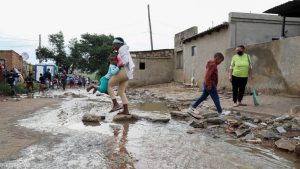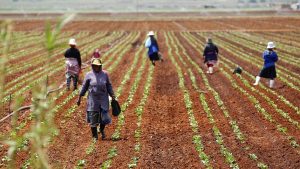Northern Cape farmers are on high alert as fears grow over the movement of swarms of locusts that are destroying crops around the province.
This is the second time that the brown locusts have been spotted in a short space of time. They were first spotted in areas in the Pixley Ka Seme Municipality, including Britstown, Hanover, Noupoort and Colesberg.
The MEC for the Department of Agriculture, Land Reform and Rural Development, Mase Manopule has warned farmers and the community to remain vigilant
“The outbreak has now moved from Pixley then to ZFM, and the latest information we received today is in the Namaqua. The team on the ground as they are monitoring, they have made an observation that the movement is coming from Namibia, particularly in the areas close to Pofadder area. So, we would like to urge our farmers on the ground and our community members, when they observe any movement of the swarms, to notify our team on the ground.”
Agri Northern Cape President, Nicol Jansen says it is imperative to control the movement of the swarms to prevent the threat to food security.
“The locusts have advanced in their development from hoppers to flight stage and threaten the irrigation in the Northern and Free State. Isolated incidences of crop damage have already been reported. And farmers with the help of combat teams do their utmost best to prevent the swarms entering irrigation fields. It is of the utmost importance to control the numbers of the outbreak to prevent uncontrollable numbers of swarms in the near future.”
Explainer: Locust outbreak
The Department of Agriculture, Forestry and Fisheries announced in December 2020 that the Free State, Northern Cape and Western Cape are currently experiencing outbreaks of locusts.
In October of that year, the swarms of locusts had descended upon vast areas of land in the Karoo in the Eastern Cape, devouring the grass and destroying crops on an already drought-stricken part of the country.
In February this year, East Africa experienced the outbreak.
Professor Frances Duncan from Wits School of Animal Plant and Environmental Sciences says a locust outbreak occurs when it starts raining after a prolonged drought.
Speaking on SAfm, Duncan says locust eggs which can stay underground for up to four years, start hatching after rainfall.
She says a locust outbreak can be prevented through ploughing and monitoring. However, it would be difficult to find the egg beds.
“There have been talks about ploughing of the land. If you plough it, you will get rid of the egg beds, but that could upset that land. Our locusts are in the Karoo area, where there is very little ground cover. If you ripped up all that land and if you ripped up that land, you would get rid of the feed for the sheath. So, it’s very difficult to know what to do. You couldn’t burn it because that wouldn’t help. Ploughing could help, but we don’t know where the egg beds are. So, the best is to look into monitoring.”






